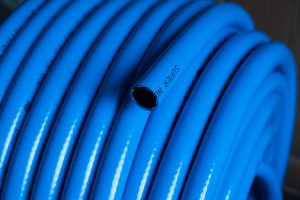Did you know that finding the right water heater settings can save you a ton of money? Indeed, while most people don’t give their hot water heater settings any thought whatsoever, they’re actually quite important. Not only will it save you money, but it’ll also make your showers more comfortable as well.
Let’s take a look at the steps.
Default Hot Water Heater Settings Can Vary

Water heaters in Phoenix often come with default temperature settings as high as 140 degrees Fahrenheit. That’s way higher than most people need but manufacturers do it for a number of reasons.
For one, according to the Department of Energy, bacteria can’t survive in water that hot. For consumers suffering from decreased immune function or respiratory diseases, high gas or electric water heater settings can be useful.
Of course, high temperatures can also impress consumers who likely just replaced their tank because the old one stopped working properly.
Once this psychological gimmick wears off, though (and assuming you don’t have a disease that makes you particularly prone to bacteria), you’ll probably derive far more satisfaction from saving money on your water bill, which we’ll show you how to do next.
How Much Are Your Gas and Electric Hot Water Heater Temperature Settings Costing You?

As a general rule, for every 20 degrees you lower your gas or electric water heater settings, you’ll save as much as 10% on your bill. This can make a significant difference in the average electric bill in Arizona for those using water heaters. That’s not bad at all! In fact, it really adds up over time and you can surely think of several better uses for that money.
“But wait,” you might be thinking. “I love hot showers!”
That’s fair — but you almost certainly don’t take showers at 140 degrees Fahrenheit, which actually poses a scalding risk. You likely won’t even notice the change. Even if you do, turning the temperature back up is easy. It might even cause old hot water heaters to stop working.
How To Adjust Your Gas and Electric Hot Water Heater Temperature Settings
Now that you know why you should lower your water heater’s temperature, let’s look at how to go about doing this.
Step One: Get An Accurate Temperature Reading
The thermostat dial connected to your water heater tank is likely unreliable. As such, you should actually measure the water coming out of your faucet with a thermometer. The Department of Energy recommends measuring the water coming out of the faucet that lies furthest from your water heater.
Once you get the setting, make note of it.
Step Two: Figure Out Where to Make the Adjustment
Different types of water heaters have different adjustment methods so we’ll look at each of them individually.
Electric Water Heater Settings
For electric water heaters, you need to adjust the hot water settings at the top and bottom. Both controls will usually be hidden behind a panel and consist of knobs that you turn to the desired electric water heater thermostat settings.
Gas Water Heater Settings
Newer gas water heaters have temperature controls similar to what we mentioned above in the section on electric units. Some older gas heaters, however, have a temperature knob near their base that you can simply turn to the desired temperature.
Tankless Water Heater Settings
Lastly, we have tankless water heaters. This is perhaps the easiest adjustment of all as there’s usually an LED panel where you can directly adjust the temperature. These systems are handy because they often allow you to adjust the tankless water heater settings more precisely than with dial-based adjustment systems.
Step Three: Make The Adjustments
If you have an electric unit, make sure you disconnect its electrical power before adjusting the hot water heater settings at the top and bottom as we outlined previously. You can do this by switching the appropriate controls off at your circuit breaker. You should also do this if you have a gas water heater that uses some electricity (as some newer units do).
But wait! What temperature should you set it to?
The Department of Energy recommends setting your heater to 120 degrees Fahrenheit. That should be plenty hot enough for most uses in your home.
Now, some water heater temperature controls come with settings that read “A-B-C” as opposed to numbers. Generally, A means 120 degrees, B means 130 degrees, and C means 140 degrees.
Refer to your water heater’s manual to confirm these settings.
Step Four: Tweak the Settings as Necessary
After you’ve adjusted your gas or electric water heater thermostat settings, you may find that you need to tweak them once or twice to find the optimal setting. You want to find the right balance between comfort and frugality. If that’s higher than 120 degrees Fahrenheit for you, no shame there. Adjust away!
Frequently Asked Questions
Is 150 Too Hot For A Water Heater?
A temperature setting of 150 degrees is almost certainly too hot for your water heater. At that temperature, you’re very likely to experience scalding. This is a significant danger to your children, who may play with the faucet temperature settings, unaware of the danger, and end up scalding themselves unintentionally.
What Is The Maximum Temperature For A Water Heater?
For most water heaters, the maximum temperature setting is 150 degrees.
Is 140 Too Hot For A Water Heater?
For most people, yes, 140 degrees Fahrenheit is too hot. The exception would be people who need an extra layer of protection from bacteria, which can’t survive in water at that temperature. Such a condition doesn’t protect you from scalding, though, so you’ll likely still need to install an apparatus at the showerhead that cools the water down before it comes out.
Why Is My Water So Hot?
If you’ve never adjusted your hot water heater settings, they’re likely still at the manufacturer default of 140 degrees. This is especially true if you’ve only recently had your hot water heater installed; the old one was likely adjusted at some point over the years, whereas the new one is at its default.










